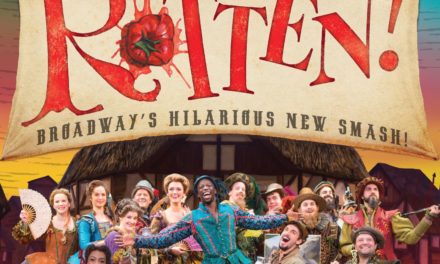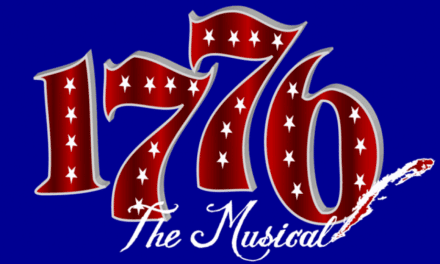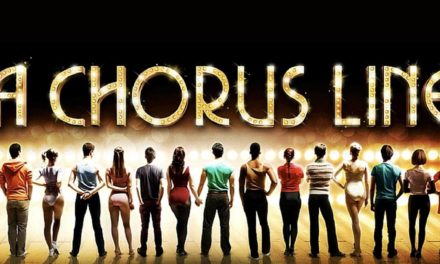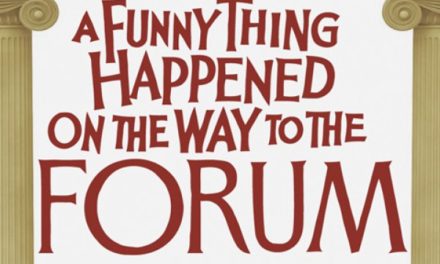One of the undisputed masterpieces of musical theatre, West Side Story began as an idea called East Side Story. Director/choreographer Jerome Robbins and composer Leonard Bernstein wanted to set Shakespeare’s Romeo and Juliet in modern dress, dealing with contemporary prejudices. But, the more they read the papers, the more they learned of young gangs on New York’s west side. The “native” New Yorkers were using intimidation and violence to make the incoming Puerto Rican population feel unwelcome. Bernstein mentioned his fondness for Latin rhythms, and they were on their way.
Narrative dances had appeared in musicals for many years, but the bold innovation of West Side Story is that it uses dance to tell most of the story. The whole conflict between the warring gangs, the Jets and the Sharks, is set up in the opening, through choreography. West Side Story gave Bernstein the opportunity to write some of the most exciting dance music ever written for the stage, and for Robbins to perfect a style in which the macho posturing and violence of young men could be made to seem real, in a ballet. This powerful way of moving had been developed in two previous Robbins/Bernstein collaborations: the ballet, Fancy Free, and the musical they made from it, On The Town.
West Side Story succeeds in depicting the true-life tragedy of malevolent youth in original, stylized, terms. During the “rumble,” we fear for the lives of the characters, as we would in any fight, and don’t think “This is silly; boys at war don’t dance. “It’s an extraordinary accomplishment, the result of the ingenuity of what Robbins does with the dances and Bernstein does with the music. The book writer, Arthur Laurents, doing his first musical, came up with an invented language that plays as the equivalent of the obscenities gang members use, but, in reality, it’s nonsense. None of the “grown-up” characters sing, so the musical world is reserved for the young, which makes that adult presence a bit stilted, less sexy. Originally, Leonard Bernstein intended to write the lyrics himself, but, with so much composing to do, he called upon a young lyricist with no Broadway experience, Stephen Sondheim, to collaborate. Bernstein was so impressed with Sondheim’s output, he eventually changed the credits to read: “Lyrics by Stephen Sondheim.”
West Side Story is a musical tragedy. There had been some before, there have been many since. Seeing it today, one is struck by how often, and in how many ways, the sadness of the unhappy plot turns is leavened by bits of comedy and energy. “The Jet Song,” “America,” and “Gee, Officer Krupke” are comedy songs. “I Feel Pretty,” “Cool” and “A Boy Like That” use invigorating rhythms. West Side Story refuses to wallow in the blues, but instead depicts characters trying to find a way out: “There’s a place for us, somewhere. “Musicals of more recent vintage go overboard, sometimes offensively, in portraying depressing turns of events.
The highlight of West Side Story for me is a musical sequence, The “Tonight” Quintet. We hear from many different characters from different parts of the stage: Tony and Riff planning the rumble, the Jets and the Sharks marching to the rumble, Anita preparing for a sexy date, and the young lovers rising above it all with their airy beguine. All these themes come together at once, a musical kaleidoscope of emotions and melodies. Every musical should have a moment as splendid.
Recommended Reading
Something’s Coming, Something Good: West Side Story and the American Imagination
. (Applause Books). Something’s Coming, Something Good: West Side Story and the American Imagination takes a critical, comprehensive look at one of the most inventive, influential, and internationally beloved Broadway musicals of all time from its inception by a brilliant quartet of creators (Robbins, Bernstein, Sondheim, and Laurents) to its smashing success on film, to its ongoing popularity on stages around the world and its potent impact on the Great American Musical. Featuring intriguing chapters on West Side Story in relation to Romeo and Juliet ; as a recording phenomenon; as a film rated the second-best movie musical of all time by the American Film Institute; as part of a wave of juvenile delinquency dramas; as the first great choreographer-auteur musical; and as the granddaddy of “youth musicals” such as Hair and Rent , Something’s Coming, Something Good is a revealing guide for those who have seen the show; for those who wish to study it for pleasure or inspiration; and for actors, designers, and directors planning on producing it.
The Making of West Side Story from Amazon.com West Side Story was a landmark musical. When it premiered on Broadway in 1957, it showed how dancing, singing, acting, and design could merge into a single means of expression, a seamless unity. Whether it was completely new vision as a concept musical, or the pinnacle of an already established tradition, it marked the most impressive body of choreography in a single show and was acclaimed as Leonard Bernstein’s strongest work for the Broadway stage. Keith Garebian’s look into the behind the scenes work that goes into creating a great Broadway musical.





















